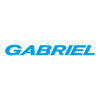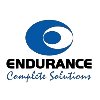Filter interviews by
Ppap Automotive Interview Questions and Answers for Freshers
Ppap Automotive Interview Experiences for Freshers
7 interviews found
Graduate Engineer Trainee (Get) Interview Questions & Answers
posted on 11 Nov 2024
(1 Question)
- Q1. Introduce yourself
(1 Question)
- Q1. Internship experience and project working
I applied via Campus Placement and was interviewed in Mar 2024. There were 2 interview rounds.
(2 Questions)
- Q1. Self Introduction
- Q2. Some basic knowledge about Plastic
(1 Question)
- Q1. Machines Knowledge
Interview Preparation Tips

(2 Questions)
- Q1. About your education and ability to solve problems
- Q2. Zeroth low of thermodynamics etc
- Ans.
The zeroth law of thermodynamics states that if two systems are in thermal equilibrium with a third system, then they are in thermal equilibrium with each other.
The zeroth law is the basis for temperature measurement and the concept of thermal equilibrium.
It establishes the transitive property of thermal equilibrium.
It allows us to define a temperature scale and compare temperatures.
For example, if a cup of coffee and ...
(1 Question)
- Q1. Your confident level and how can you be a best leadership with your team
Interview Preparation Tips

(2 Questions)
- Q1. They asked about motors and it's working, just basic questions
- Q2. They asked about thevenin's and Norton's theorems
Interview Preparation Tips
(1 Question)
- Q1. Good technical questions
Interview Preparation Tips
Interview Questionnaire
1 Question
- Q1. What is engine??
- Ans.
An engine is a machine that converts fuel into mechanical energy to power vehicles or machinery.
Engines come in various types such as gasoline, diesel, electric, and hybrid.
They are used in cars, trucks, airplanes, boats, and generators.
Engines work by igniting fuel and air mixture to create a controlled explosion that moves pistons and generates power.
Regular maintenance is required to keep engines running efficiently...
Interview Preparation Tips
I applied via Company Website and was interviewed before Jan 2021. There was 1 interview round.
Interview Questionnaire
1 Question
- Q1. I was asked about injection molding
Interview Preparation Tips
3 year ppap automotive pvt ltd
Top trending discussions






Interview questions from similar companies

I applied via Walk-in and was interviewed before May 2021. There were 4 interview rounds.
Group discussed on Di
scipline spelling topic and explain
(1 Question)
- Q1. Self introduction explain
(1 Question)
- Q1. Explain and overall experience
(1 Question)
- Q1. Discipline and working hour and salary discuss
Interview Preparation Tips

Graduate Engineer Trainee (Get) Interview Questions & Answers
Subrosposted on 5 Apr 2015
Interview Questionnaire
6 Questions
- Q1. Draw saturation curve, and explain it
- Ans.
A saturation curve shows the relationship between the concentration of a substance and its ability to bind to a receptor.
The curve starts at zero binding when there is no substance present.
As the concentration of the substance increases, more receptors become occupied and the binding increases.
Eventually, all the receptors become occupied and the binding reaches a maximum, which is the saturation point.
Further increase...
- Q2. Is there any instrument which can measure entropy, explanation?
- Ans.
Yes, entropy can be measured using instruments such as calorimeters and thermometers.
Entropy can be measured indirectly through changes in temperature or heat flow.
Calorimeters can measure the heat released or absorbed during a reaction, which can be used to calculate entropy.
Thermometers can measure changes in temperature, which can also be used to calculate entropy.
Entropy can also be estimated using statistical meth...
- Q3. Define heat and entrophy
- Ans.
Heat is the transfer of energy from one body to another due to a temperature difference. Entropy is a measure of disorder or randomness.
Heat is a form of energy that flows from hotter to cooler objects
Entropy is a measure of the number of ways in which the energy of a system can be distributed among its particles
Heat can be transferred through conduction, convection, and radiation
Entropy always increases in a closed sy...
- Q4. 3-4 question on project
- Q5. Interested in higher studies or not
- Ans.
Yes, I am interested in pursuing higher studies.
I believe that higher education can provide me with more opportunities for personal and professional growth.
I am considering pursuing a master's degree in my field of work.
I have already started researching different programs and universities.
I am also exploring options for scholarships and financial aid.
I am excited about the prospect of continuing my education and expan...
- Q6. General HR ques
Interview Preparation Tips
Experience: only technical question, mainly theoretical and very less numericals.
Tips: focus on RAC, HMT, FM, material science and manufacturing.
Duration: 30 minutes
Total Questions: 30
Round: Technical Interview
Experience: duration of interview was 15min
Tips: prepare thermal engg subjects, and explanation regarding your project.it would be beneficial if you are having thermal engg. based project in final year.
Round: HR Interview
Experience: duration was 10 min.
Skills: concepts of thermal engg. subjects
College Name: NIT JAIPUR

Graduate Engineer Trainee (Get) Interview Questions & Answers
Subrosposted on 25 Feb 2015
Interview Questionnaire
2 Questions
- Q1. Questions asked were from Refrigeration and Air conditioning
- Q2. Questions asked were from Future plan, project
Interview Preparation Tips
Experience: Resume short listing was done on the basis of cgpa>7.Mine was 7.26.
Round: Test
Experience: Only Technical - Small descriptive type of questions
Tips: I prepared fundamentals of FM, RAC, HMT for test.
Duration: 90 minutes
Round: Technical Interview
Experience: Duration of the interview was 35 mins.
Round: HR Interview
Experience: Interview was over the Skype.There were two Technical persons and One HR person in the panel .
Tips: .Prepare Refrigeration cycles thoroughly
General Tips: I think I got selected because I answered every technical questions and I started preparing two weeks earlier before the placements.
Skill Tips: Prepare Refrigeration cycles and fundamentals thoroughly.They looking for Thermal background
Skills: Fundamental knowledge of core subjects
College Name: IIT MADRAS
Ppap Automotive Interview FAQs
The duration of Ppap Automotive interview process can vary, but typically it takes about less than 2 weeks to complete.
Tell us how to improve this page.
Ppap Automotive Interviews By Designations
- Ppap Automotive Quality Engineer Interview Questions
- Ppap Automotive Graduate Engineer Trainee (Get) Interview Questions
- Ppap Automotive Engineer Interview Questions
- Ppap Automotive Diploma Trainee Engineer Interview Questions
- Ppap Automotive Production Engineer Interview Questions
- Ppap Automotive Management Trainee Interview Questions
- Ppap Automotive Graduate Engineer Interview Questions
- Ppap Automotive Team Leader (Technical) Interview Questions
- Show more
Interview Questions for Popular Designations
- Senior Executive Interview Questions
- Analyst Interview Questions
- Software Developer Interview Questions
- Senior Engineer Interview Questions
- Graduate Engineer Trainee (Get) Interview Questions
- Associate Software Engineer Interview Questions
- System Engineer Interview Questions
- Senior Software Engineer Interview Questions
- Show more
Overall Interview Experience Rating
based on 2 interview experiences
Difficulty level
Duration
Interview Questions from Similar Companies
Ppap Automotive Reviews and Ratings
based on 422 reviews
Rating in categories
|
Engineer
107
salaries
| ₹2.9 L/yr - ₹5.8 L/yr |
|
Assistant Engineer
70
salaries
| ₹2 L/yr - ₹3.6 L/yr |
|
Production Engineer
68
salaries
| ₹2.2 L/yr - ₹5.2 L/yr |
|
Assistant Manager
62
salaries
| ₹5.9 L/yr - ₹10 L/yr |
|
Graduate Engineer Trainee (Get)
49
salaries
| ₹1.8 L/yr - ₹3.4 L/yr |

JBM Group

Subros

Endurance Technologies

Spark Minda
- Home >
- Interviews >
- Ppap Automotive Interview Questions >
- Ppap Automotive Interview Questions for Fresher












